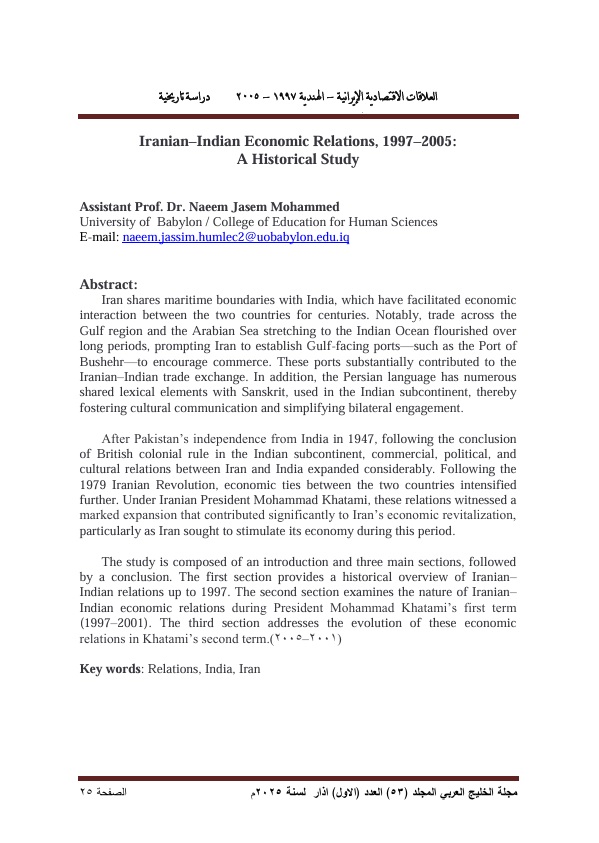العلاقات الاقتصادية الإيرانية – الهندية 1997-2005 دراسة تاريخية
الكلمات المفتاحية:
علاقات ، الهند ، ايرانالملخص
ترتبط إيران مع الهند بحدود بحرية ساعدت على التعامل الاقتصادي بين البلدين منذ قرون عدة، لا سيما وأن التجارة في منطقة الخليج وبحر العرب وصولاً إلى المحيط الهندي كانت رائجة خلال قرون من الزمن، الأمر الذي جعل إيران تقوم ببناء الموانئ المطلة على الخليج لتشجيع التجارة ومنها ميناء بوشهر وغيره من الموانئ التي ساعدت على عملية التبادل التجاري الإيراني- الهندي، كما أن اللغة الفارسية ترتبط مع اللغة السنسكريتية المستخدمة في شبه القارة الهندية بمفردات كثيرة ساعدت على التواصل الحضاري بين إيران وشبه القارة الهندية، وسهلت طريقة التعامل معها، وبعد استقلال باكستان عن الهند عام 1947 بعد انتهاء حقبة الاستعمار البريطاني لشبه القارة الهندية، قامت العلاقات التجارية والسياسية والثقافية بين إيران والهند بشكل أوسع، وبعد قيام الثورة الإيرانية عام1979 تطورت العلاقات الاقتصادية بين البلدين وشهدت في عهد الرئيس الإيراني محمد خاتمي تطوراً ملحوظاً ساعد على تطور الاقتصاد الإيراني بشكل خاص، لا سيما وأن إيران كانت بحاجة لإنعاش اقتصادها أبان تلك المدة .
يتألف البحث من مقدمة وثلاثة محاور رئيسة وخاتمة، تضمن المحور الأول لمحة تاريخية عن طبيعة العلاقات الإيرانية– الهندية حتى عام 1997، أما المحور الثاني فقد أشار إلى طبيعة العلاقات الاقتصادية الإيرانية– الهندية في المرحلة الأولى من حكم الرئيس الإيراني محمد خاتمي1997-2001 ، بينما تحدث المحور الثالث عن تطور العلاقات الاقتصادية الإيرانية– الهندية في المرحلة الثانية من حكم الرئيس الإيراني محمد خاتمي 2001-2005 .




